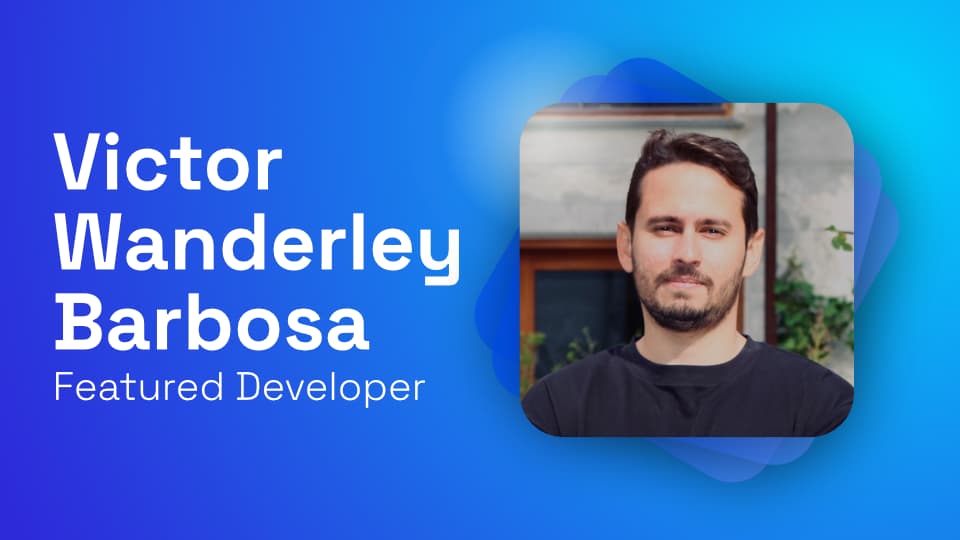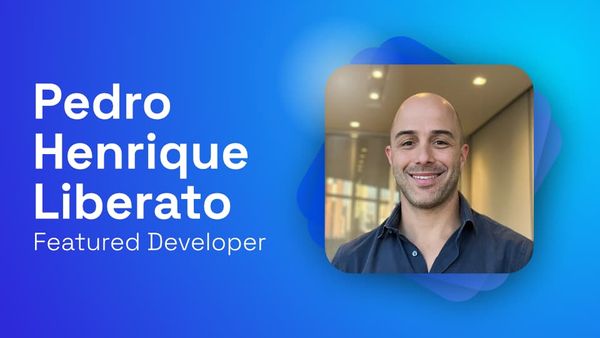Reach out to us if you'd like to share your story!
Introducing VWB
Victor Wanderley Barbosa, or VWB, is a trained architectural engineer turned software developer recently promoted to Digital Practice Lead at Schmidt Hammer Lassen (SHL). In his new role, he is responsible for guiding digital initiatives at the studio within the Digital Practice team, creating a collaborative work environment between design staff and R&D, and bridging client demands to solutions through technology.
The challenge: making computational design more accessible at SHL
One of his key objectives is to position SHL as a European digital hub for the Perkins&Will network of studios. This includes focusing on computational design and sustainability engineering with a strong emphasis on environmental and spatial intelligence, data-driven design and BIM using tools like Rhino, Grasshopper, Revit, and Speckle.
Victor was willing to drive a difference in architecture and engineering by making computational design more accessible. As he delved into the field, he discovered many clever scripts and tools that could help improve the lives of his colleagues, but he found that these tools were often difficult to use or incompatible with other systems.
The solution: Speckle enables different disciplines to work together effectively
"Computational design was not enough," Victor explained. "You want your colleagues to experience the same increase in productivity, but for some reason, your script doesn’t work on their PCs? Or is your colleague scared of looking at a spaghetti of wires? Uh oh."
::: tip
I want our digital tools to be used by the many, not just a few (nerds)," Victor says. "This is only becoming possible because platforms like Speckle are paving the infrastructure to solve more and more industry use cases.
:::
Victor is also a big fan of Miro and other similar infinite board platforms. “What impresses me the most is the capacity of these tools to bring together work that comes from interns, designers, construction architects, and more senior folks like principals and directors. You benefit the most from collaboration when the range of users is that large.” Similarly, the immediate accessibility of 3D data in the Speckle viewer brings everyone to the model and the model to everyone, regardless of expertise.
Victor has found that Speckle's data serialization and transport platform is especially helpful when he needs to extract data from design applications and report it somewhere for processing or display. "I have used and gotten inspired heavily by the Objects library and conversion methods," he says. "I've recently worked on my company's data model while still inheriting all the magic from Speckle for data serialization and transport."
::: tip
Speckle, as a platform was especially helpful:
I've recently worked on my company's data model while still inheriting all the magic from Speckle for data serialization and transport
:::
The ability to use his preferred tools and languages is important. He typically writes most of his code in JavaScript from a full-stack standpoint, working with Vue 3, Tailwind CSS, and Three.js for user interfaces. For the backend services, he uses GraphQL/REST for APIs, TypeORM and PostgreSQL for data storage, and Docker for containerisation. The fact that Speckle is accessible from the front and backend technologies is a bonus to achieving Victor's good objectives for his colleagues and the clients of Schmidt Hammer Lassen.
The impact: developing user-centric and inclusive applications
A specific project Victor has developed is a room and area plans application. The tool has been developed from both Rhino and Revit perspectives, focusing on real-time feedback and visualisation in Rhino and data extraction and syncing in Revit, similar to the Speckle way.

The app's goal is to make the process of keeping areas more intuitive and avoid the feeling that designing can lose the fun of projects with overwhelming room programs. Many users have reported that the Rhino plugin/Revit add-in feels more like something they would use on their phones rather than on that software, demonstrating Victor's commitment to creating tools that are accessible and user-friendly. “My work focuses on developing applications where the user comes first. And the user is not necessarily an architect. It gets more interesting when the user is the client.”

Shaping the AEC future together
We posed a challenge to Victor, asking him to describe why AEC professionals are drawn to software development; "Architects are always looking for ways to optimize their work processes and create better designs, and they see the potential of software development to help them achieve these goals."
He argued that architects are not alone in their interest in software development. "This is happening to other industries as well. Biologists, artists, and even lawyers are scripting their work these days. People are learning to translate business logic into code; that's the important bit to me."
Victor pointed out that software engineers often struggle with translating business logic into code because they can only see the industry from a narrow perspective. "Mel Conway has this idea of Universal Human Skills and how writing code is slowly becoming one of them," he added.
Overall, Victor feels that the synergy between his focus on user-oriented tool development and what Speckle can offer makes it a powerful tool for him in his work at Schmidt Hammer Lassen. His work and expertise align closely with Speckle's mission to streamline AEC workflows and create better tools for design and construction professionals.
Final thoughts
Victor also appreciates the benefits of being part of the Speckle community. "As a member of the Speckle community, I can connect with other developers and designers, share knowledge and ideas, and get support for my projects; but that's not all. As Speckle continues to evolve and develop new features, I can benefit from staying up-to-date with the latest innovations and incorporating them into my work.”
::: tip
The Community is a key strength of the Speckle stack, “[...] I contribute to the community by advocating and just using it myself. There are some things in life you can only experience by getting your hands dirty, and I often come back to the forum to give feedback to the developers.”
:::
While he may be busy with work, Victor still finds time to enjoy his hobbies. "I like to read books and run on the street. Both at a slow pace!"



